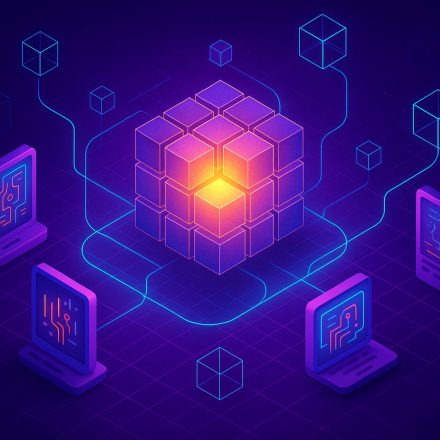
🔺 The Blockchain Trilemma: Security, Scalability, Decentralization Explained
The blockchain trilemma: security, scalability, decentralization is a foundational concept that explains the toughest challenge in blockchain design. As developers try to build faster, safer, and more inclusive blockchains, they often face trade-offs between these three critical properties.
Table Of Content
- 🔺 What is the Blockchain Trilemma?
- ❓ Why is the Trilemma Important?
- 🔐 Security
- Examples of Security Mechanisms
- ⚖️ Scalability
- Challenges
- Scaling Solutions
- 🌐 Decentralization
- Why It Matters
- 🧩 Why Can’t We Have All Three?
- 🔄 Real-World Blockchain Trade-Offs
- 🛠️ Projects Trying to Solve the Trilemma
- 🎯 Final Thoughts
- 🔗 Learn More
This article explains exactly what the blockchain trilemma is, why it matters, and how some projects are working to solve it.
🔺 What is the Blockchain Trilemma?
The blockchain trilemma refers to the idea that it’s incredibly difficult for a blockchain network to achieve security, scalability, and decentralization all at once. Most blockchains can excel at only two of these, while compromising on the third.
This dilemma was popularized by Ethereum‘s co-founder Vitalik Buterin.
❓ Why is the Trilemma Important?
Understanding the blockchain trilemma: security, scalability, decentralization helps you evaluate how well a blockchain can perform in real-world use cases. If a project sacrifices decentralization for scalability, it might become more vulnerable to censorship or central control. If it sacrifices scalability, it may be too slow or expensive to use.
🔐 Security
Security ensures that transactions on the blockchain are accurate, tamper-proof, and protected from malicious attacks.
Examples of Security Mechanisms:
- Proof of Work (Bitcoin)
- Proof of Stake (Ethereum 2.0)
- Cryptographic algorithms and validation systems
Without strong security, user funds and data can be stolen or corrupted.
⚖️ Scalability
Scalability refers to a blockchain’s ability to handle high volumes of transactions without slowing down or increasing fees.
Challenges:
- Ethereum can handle ~15 TPS (transactions per second)
- Visa handles ~24,000 TPS
Scaling Solutions:
- Layer 2 solutions (Arbitrum, Optimism)
- Sharding (coming to Ethereum)
- Sidechains and Rollups
🌐 Decentralization
Decentralization means that control is distributed across a wide network of nodes instead of a central authority.
Why It Matters:
- Increases censorship resistance
- Reduces the risk of single points of failure
- Empowers users rather than institutions
Bitcoin is a prime example of a highly decentralized blockchain.
🧩 Why Can’t We Have All Three?
The technical limitations of current blockchain infrastructure make it extremely difficult to maximize all three properties:
- More decentralization → Slower consensus → Less scalability
- More scalability → Centralized infrastructure → Less security/decentralization
- Strong security + decentralization → Low transaction throughput
This trade-off creates the “trilemma.”
🔄 Real-World Blockchain Trade-Offs
| Blockchain | Security | Scalability | Decentralization |
|---|---|---|---|
| Bitcoin | ✅ Strong | ❌ Low | ✅ High |
| Ethereum | ✅ Strong | ⚠️ Medium (with L2) | ✅ High |
| Solana | ⚠️ Moderate | ✅ High | ❌ Lower |
| Polygon | ⚠️ Moderate | ✅ High | ⚠️ Partial |
🛠️ Projects Trying to Solve the Trilemma
- Ethereum 2.0 – Introduces sharding + Proof of Stake
- Polkadot – Multi-chain architecture for parallel processing
- Avalanche – Consensus protocol designed for scalability
- Cosmos – Interconnected chains with optimized performance
These projects aim to balance the blockchain trilemma: security, scalability, decentralization without sacrificing long-term utility.
🎯 Final Thoughts
Solving the blockchain trilemma: security, scalability, decentralization is one of the most important challenges in blockchain innovation. Every project makes trade-offs — and knowing which priorities a network chooses can help you make smarter decisions as a builder, investor, or user.
The goal is not necessarily to achieve perfection, but to find balanced solutions that push the ecosystem forward.
🔗 Learn More
Internal Link → Advanced Blockchain Concepts
External Link → https://ethereum.org/en/developers/docs/scaling/














